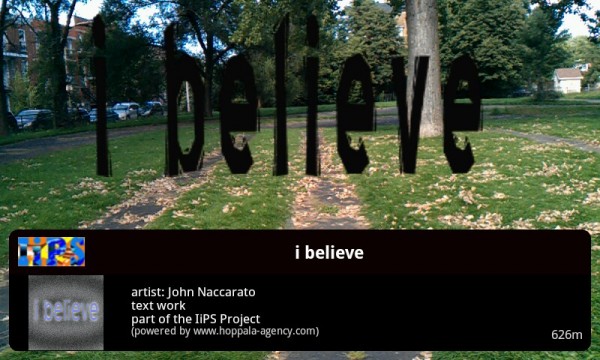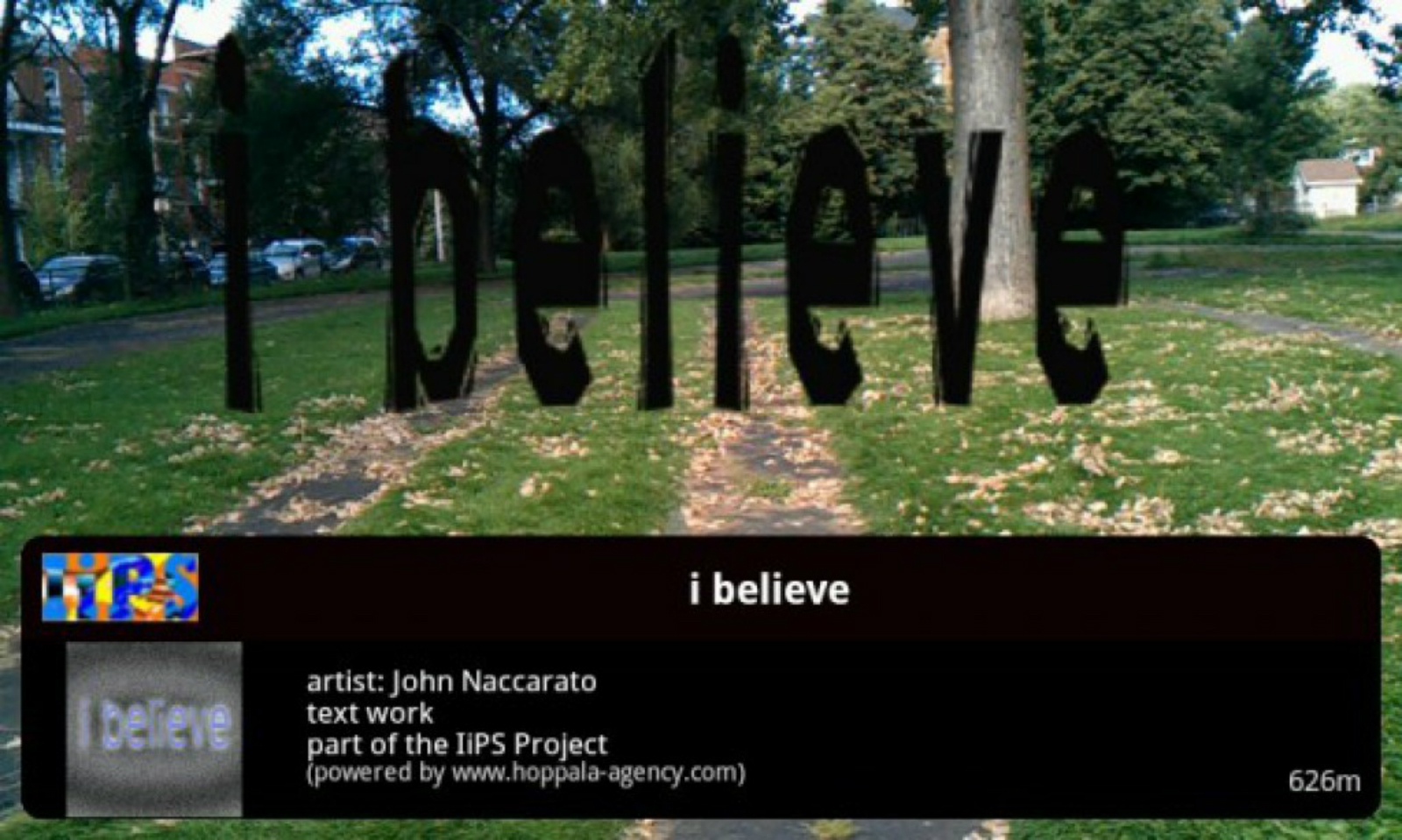During the first half of 2011, I looked at the potential of Augmented Reality mobile technology (AR) for creating awareness around issues of public and private space. The project ‘i Believe’ came into existence in part due to a previous project ‘Intimacy in Public Space: Site Specific Performance & Interventionist Work with New Media’ in which I and fellow artist (Sarah Nesbitt) had curated during the Art Matters Festival (Montreal, 2007) The project had involved a series of performance-based interventions where artists were asked to create intimate moments between themselves and the public questioning notions about intimacy or lack thereof, within public spaces.
With ‘i Believe’, the focus became the alarming escalation of condo developments in Montreal which I felt was gutting the cultural and social infrastructure of the city. This rise in condo development seemed to be catering to a small niche of the population with no clear philosophy by its developers as to their impact on the neighbourhoods and the city itself. Furthermore, Montreal’s condo development had triggered a mass gentrification of low income rental and historic areas.
I decided that perhaps the best way to approach this issue would be to create a psychogeographical study, one which could help critique and understand how major shifts in a city’s infrastructure affects memory, identity and ritual play. As a tool, AR was perfect since it allowed for virtual objects such as text, sound, 2D/3D image and video to remain hidden in public space until participants were made aware of their presence.
One example of the project ‘i Believe’, was where text was used as an AR object to trigger awareness of a particular green space being used as a public throughway. The text was only visible through the use of a smart device (mobile phone/pad/tablet) and only when participants were near the general area. Via their smart device participants could witness a six foot high black text ‘i believe’ intersecting onto the path which appeared to be blocking their way. Even though the text was virtual and overlaid onto the physical space being viewed, the text’s apparent real presence was powerful and profound.
Perhaps for me the most important aspect of such an AR interaction was how one’s action leaves behind an intimate trace or memory imprint which can be shared with others. It creates a very private moment in a highly public space. Of course the inverse is true when a large block of concrete and mortar – a condo – stands in your way, negating any form of intimacy or public interaction.
Some questions which arose from the project were:
- How does the experiencing of the AR event affect or alter the participant’s relationship to that specific space? Can the existence of the AR text affect the space even without the participants’ awareness of its existence?
- Does the participant carry the residual memory imprints of that specific experience with them, so that if they return to the specific place, they remember the experience – even if they no longer see the object?

